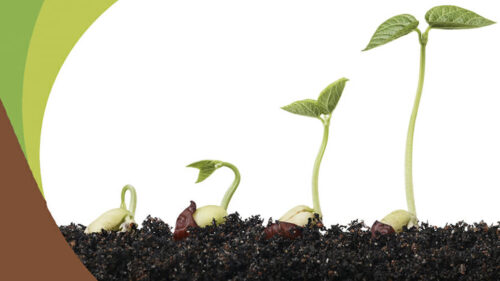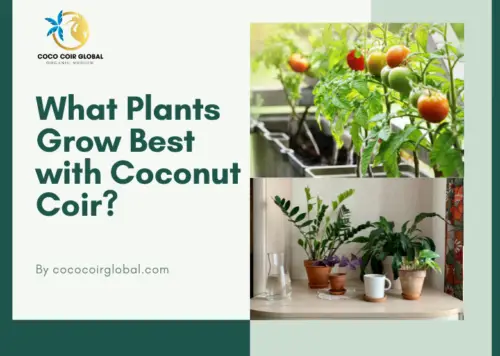Coco peat is good for developing flora including orchids, ferns, and succulents because of its excellent water retention homes. Coco peat is a famous growing medium that provides a properly-balanced surroundings for plant boom, ensuring wholesome root development and reducing the danger of overwatering.
With its capacity to retain moisture even as nevertheless permitting for correct drainage, coco peat is perfect for vegetation that require a nicely-aerated root machine. Whether you’re an avid gardener or a newbie, the usage of coco peat as a developing medium can help you create an optimal surroundings on your flora to thrive.
Benefits Of Using Coco Peat For Plant Growth
Coco peat is appropriate for a extensive variety of plant life, along with greens, herbs, and ornamentals. It provides high-quality water retention and aeration, selling robust root boom and healthful development. Using coco peat facilitates improve soil structure and complements the growth of plants, making it a perfect medium for diverse plant species.
Natural Water Retention
Coco peat has superb herbal water retention properties, making it best for flora that require consistent moisture.
Enhanced Aeration
The fibrous structure of coco peat promotes more advantageous aeration, permitting roots to breathe effortlessly and preventing waterlogging.
Rich In Nutrients
Coco peat is rich in critical nutrients, offering plants with a balanced diet for top-rated increase and fitness.

Types Of Plants Suitable For Coco Peat
Opt for flora like snake plants, spider plants, and peace lilies for Coco Peat. These flora thrive inside the airy and moisture-maintaining traits of Coco Peat, presenting perfect growing conditions. Opting for these sorts ensures a success increase and vibrant foliage to your indoor garden.
Fruit-bearing Plants
One of the main advantages of using coco peat as a growing medium is its capability to support the growth of fruit-bearing flora. These plants thrive within the well-tired and moisture-retentive houses of coco peat, which give an top-rated environment for healthful root improvement and nutrient absorption. Some commonplace fruit-bearing plant life appropriate for coco peat cultivation encompass:
- Melons
- Tomatoes
- Peppers
- Eggplants
These plants require a constant moisture stage, and coco peat’s excessive water retaining potential ensures a persistent supply of moisture to the roots. With right care and interest, you could expect a bountiful harvest of delicious fruits the use of coco peat because the developing medium. Now allow’s move on to leafy greens and herbs that also flourish in coco peat.
Leafy Greens And Herbs
Coco peat is an incredible desire for developing leafy veggies and herbs due to its unfastened structure and potential to maintain moisture. Leafy greens consisting of lettuce, spinach, kale, and arugula, as well as numerous herbs like basil, parsley, mint, and cilantro, thrive in coco peat’s properly-aerated and moisture-wealthy surroundings.
The loose consistency of coco peat lets in for adequate root development, making sure that the plants acquire enough nutrients and water. Its moisture-retentive homes additionally reduce the threat of overwatering or underwatering the plant life, making it easier to preserve most excellent growing conditions. Whether you’re growing herbs for culinary functions or leafy vegetables for salads, coco peat presents a super medium for his or her boom.
Flowering Plants
Coco peat is equally suitable for developing a extensive kind of flowering plant life. Its potential to hold moisture whilst allowing for proper drainage makes it a preferred desire for these plant life. Whether you are cultivating decorative plant life or potted plants, coco peat can offer the essential aid and surroundings for his or her increase and blooming.
Some common flowering flowers that thrive in coco peat include:
- Roses
- Geraniums
- Hibiscus
- Lilies
With coco peat as a developing medium, these flowering flora can flourish and produce vibrant blooms. The moisture-retentive nature of coco peat prevents the flora from drying out, letting them thrive and add splendor on your lawn or indoor area.
Tips For Growing Plants In Coco Peat
Growing plant life in coco peat may be a profitable experience, but it calls for some special considerations. In order to assist your flowers thrive in this developing medium, there are a few important hints and techniques you want to maintain in mind.
Proper Watering Techniques
When it involves watering your plants in coco peat, it is vital to strike the proper stability. Coco peat has fantastic water retention residences, so you need to be cautious not to overwater. On the alternative hand, you also don’t need to let the coco peat dry out absolutely.
Here are a couple of pointers to hold in thoughts for proper watering:
- Water your plants whilst the top layer of coco peat feels barely dry to touch.
- Avoid allowing water to accumulate within the backside of the field, as this will result in root rot.
- Ensure excellent drainage through the usage of boxes with drainage holes.
Balanced Fertilization
To make certain your plant life get the vitamins they want, it is essential to provide them with a balanced fertilizer routine. This will assist them develop robust, wholesome roots and vibrant foliage. Here are some tips for fertilizing your vegetation in coco peat:
- Choose a slow-release fertilizer this is specially formulated for use in coco peat.
- Follow the endorsed dosage instructions on the fertilizer packaging.
- Fertilize your flowers regularly, however keep away from overfertilization, as this will cause nutrient burn.
Ph Level Management
Managing the pH level of your coco peat is critical for the overall health and growth of your flowers. Coco peat has a herbal pH that is slightly acidic, so it’s important to reveal and alter the pH as wanted.
Here are a few pointers for managing the pH level:
| Tip | Action |
|---|---|
| Test the pH of your coco peat periodically the usage of a pH meter or test kit. | Take measures to regulate the pH if it falls outdoor the greatest variety in your vegetation. |
| Use pH adjusters consisting of dolomite lime or sulfur to raise or decrease the pH, respectively. | Mix the pH adjuster into the coco peat very well before planting. |
By following those pointers for developing plants in coco peat, you may create a positive environment in your plant life to thrive and flourish. Proper watering strategies, balanced fertilization, and pH degree control are key factors in making sure fulfillment whilst using coco peat as a developing medium.

Credit: cocoandcoir.Com
Common Mistakes To Avoid When Using Coco Peat
Overwatering: Excessive watering can result in root rot and preclude plant increase.
Inadequate Drainage: Insufficient drainage can cause waterlogging and suffocate plant roots.
Improper pH Levels: Incorrect pH tiers can inhibit nutrient absorption and stunt plant improvement.
When using coco peat, avoid overwatering, make certain right drainage, and hold suitable pH stages to promote healthful plant growth.
Conclusion And Recommendations
In end, coco peat is a versatile and useful growing medium which can assist the boom of a huge style of flowers. Its ability to keep moisture and offer adequate aeration makes it appropriate for cultivating many types of flowers, inclusive of greens, herbs, and decorative plants.
Final Thoughts On Coco Peat
Coco peat gives an environmentally pleasant and sustainable opportunity to traditional soil, making it an appealing option for eco-aware gardeners. Its light-weight nature and excellent water retention residences make it a great desire for container gardening and to be used in hydroponic systems.
Recommendations For Successful Plant Growth
When using coco peat, it is important to make certain right hydration and drainage to save you waterlogged conditions. Additionally, incorporating natural fertilizers and dietary supplements can optimize the nutrient content of the medium, assisting healthy plant growth.

Credit: cococoirglobal.Com
Frequently Asked Questions Of Which Plants Grow In Coco Peat?
Can Plants Grow In Coco Peat Only?
Yes, plants can grow in coco peat by myself. Coco peat offers a appropriate medium for plant increase, because it retains moisture and nutrients while allowing for correct aeration. Coco peat can be used as a standalone growing medium or as a factor in potting mixes.
What Plants Like Cocopeat?
Cocopeat is favored via flowers that thrive in well-draining and moisture-retaining soil, which includes ferns, orchids, succulents, and greens like tomatoes and peppers. It gives appropriate aeration and is rich in natural nutrients, making it a great desire for those plant life.
Can I Use Coco Peat Instead Of Soil?
Yes, you can use coco peat in preference to soil. It is a sustainable alternative that keeps moisture properly and promotes healthy plant increase.
What Are The Disadvantages Of Coco Peat?
The hazards of coco peat encompass excessive salinity, low nutrient content, and the want for common watering. Its pH degree may additionally require adjustment, and it could compact through the years.
Conclusion
Discover the numerous range of flowers appropriate for growing in coco peat. Experiment with diverse species to peer what prospers satisfactory on this sustainable developing medium. As you explore, bear in mind to do not forget your plant’s particular desires and experience the advantages of green gardening with coco peat.
